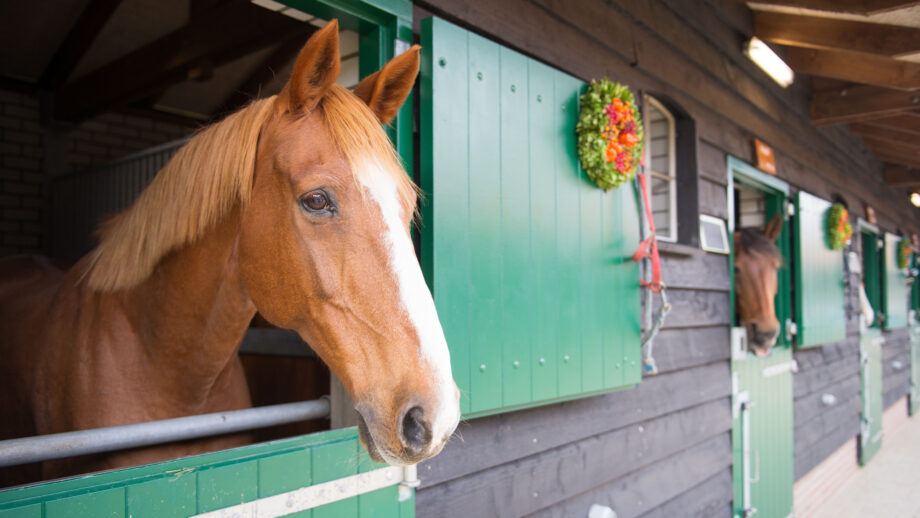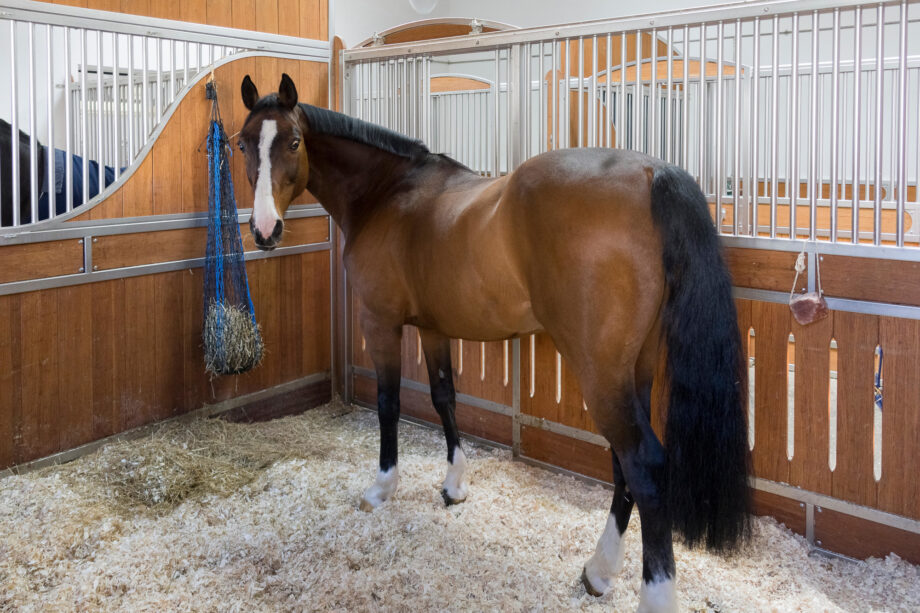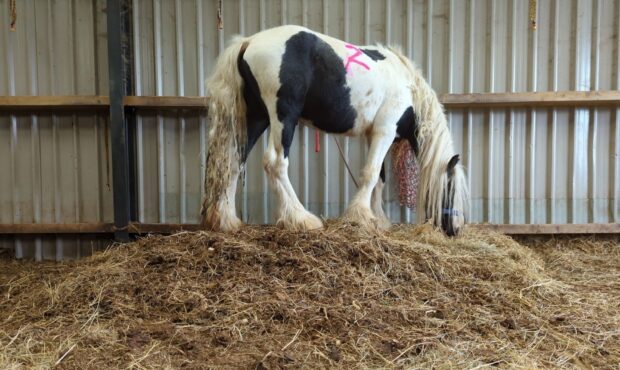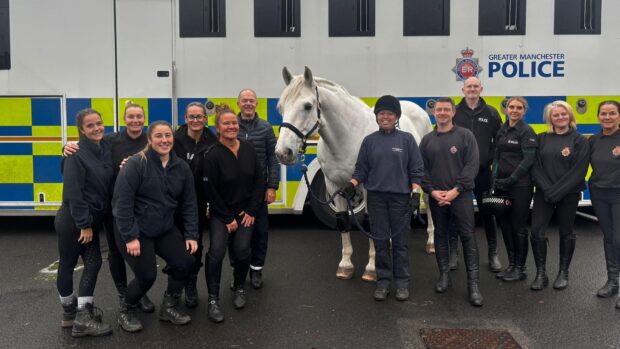Hay feeders, mirrors and activity balls can improve horses’ time in the stable, research has shown.
In a study published in Animals, US researchers assessed the physiological and behavioural responses of nine stabled horses to hay feeders, mirrors and activity balls, provided in addition to their usual bucket feed and hay fed from the ground.
The results showed that enrichment increased heart rate, foraging and locomotion and that overall, horses performed more “species-typical time budgets”.
“The hay feeder, activity ball and mirror appeared equally engaging, so we concluded that both edible and non-edible items can be effective enrichment,” lead author Miranda Brauns of the University California Davis told H&H.
“Additionally, enrichment decreased frustration behaviours, so we suggest that horses responded to enrichment with a positive emotional state, although additional research involving judgment bias testing is needed to more definitively conclude horses’ emotional states.”
Ms Brauns said the aim was to improve understanding so we can “better utilise enrichment as a welfare tool, particularly for horses who may spend sizeable time in a stable setting”.
“Enrichment effects on horses have been studied before, but there is very limited research that analyses both physiological and behavioural components. There is also limited research that compares multiple items within the same study. Therefore, our research incorporated these variables so we may obtain a more comprehensive understanding of enrichment,” said Ms Brauns.
“This study gives evidence that providing enrichment has a positive effect on physiology and behaviour, so it is strongly recommended to improve the overall welfare of stabled horses. We also found a time-of-day effect, so we recommend providing enrichment during times when horses do not have daily meal provisions.
“Individual horses may respond to enrichment in different ways, so horse owners are encouraged to try different enrichments to see what works best for their horse.”
In the study, the horses’ had at least one and a half hours of training and 30 minutes of turnout per day. H&H asked Ms Brauns if she felt the results might be different with increased turnout.
“I would hypothesise that results would be different if turnout time was greater. This is supported by enrichment studies that tested in larger paddocks and had differing results to ours,” she said.
“For example, Benhajali et al. 2009 saw a decrease in locomotion with enrichment whereas we saw an increase. Even if testing remained in stalls, a greater time in turnout may change how horses behave while in their stalls, due to the fact that turnout can be considered a form of enrichment itself. Therefore, this would be another interesting question future research could undertake.”
- Read the full study
World Horse Welfare director of UK welfare Malcolm Morley said the charity always recommends that people turn out their horses as much as possible.
“It’s really important to provide horses with the three Fs – friends, forage and freedom. Nothing replaces regular turnout with companions,” he told H&H. “However, if a horse has to be stabled, they should ideally have continuous access to forage, supplemented by a variety of forms of enrichment that may help them cope, so it’s great to have some evidence to support this in the form of this study.
“As ever, we’d urge owners to treat all horses as individuals and try out several different types of enrichment and ways to provide forage to see what their own horse prefers – our farms have seen some quite distinct preferences when trialling this with our horses. More research on longer-term impacts and with larger groups of horses would be welcomed.”
- To stay up to date with all the breaking news from major shows throughout 2025, subscribe to the Horse & Hound website
You may also be interested in:

11 small-holed haynets and slow feeders to extend eating time and reduce wastage

How to keep stabled horses happy and healthy

16 toys to help horses beat their boredom

Turning horses out: 24/7, part-time or not at all? Here are the pros and cons…

Subscribe to Horse & Hound magazine today – and enjoy unlimited website access all year round




